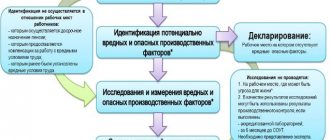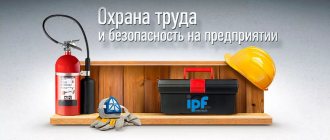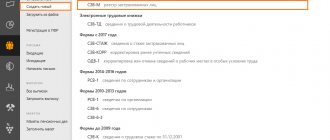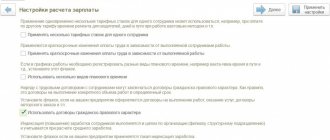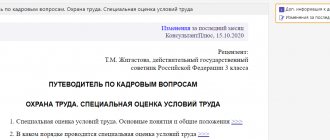Yes, these are not blue-collar professions, they are not characterized by physically hard work, they do not forge steel and iron, but a special assessment of working conditions (Special assessment - SOUT, - ed.) in office workplaces, the prevailing part of jobs in the labor market, is mandatory . In accordance with Federal Law No. 426-FZ, the procedure is carried out to confirm compliance of working conditions with state standards in the field of labor protection.
“We don’t work on oil,” many employers say today, trying to evade responsibility when carrying out special assessments of labor and safety on the premises of “office workers.” Only an office employee, just like an oil worker, is exposed to environmental factors, due to which their health deteriorates and occupational diseases develop, such as coronary heart disease, thrombosis, atherosclerosis, neurosis, osteochondrosis, loss of vision, etc. Thanks to a special assessment, it is possible to prevent them appearance and influence the improvement of conditions around the employee. This is why for many Russian companies, carrying out special assessments has already become one of the highest priorities in their activities: regardless of the nature of the workplace, assessment of the conditions there is carried out in a timely manner. Moreover, many admit that this is not just part of their image and reputation; first of all, what is important to them is the employee’s inner peace, his trust that all personal rights to work are respected.
Many companies today have structural divisions that work diligently to create a positive image of the company. This is, as a rule, the HR department and the marketing department, which are partly responsible for labor safety issues. In order to be flexible to the intense changes characteristic of modern times, HR branding of a company is usually built on creating favorable conditions for future employees and complying with the basic requirements of legislation.
Quote: The term “HR branding” (Employer branding, - ed.) was introduced by Simon Barrow, President in 1990 and means a set of functional, economic and psychological benefits provided by the employer.
One of the attractive segments for workers today is the IT sector (Information Technologies - ed.), the most striking example of the office nature of work. Undoubtedly, the leadership in the segment is in the hands of Google, Yandex and Mail.ru. Their social policy towards employees is rightfully considered an ideal: freshly squeezed juices, coffee, tea, fruits, candies, voluntary health insurance, free corporate lunches, fitness rooms, corporate English training, etc. And all this under the word “free” or with…. percentage discount. Why is all this necessary? To please the employee? They give a much simpler explanation: brain function improves through normalized nutrition, and through off-site events and promotions, social ties between employees are strengthened. The result is an effective employee and a significant result of his activities.
It is noteworthy that such “macro-enterprises” still place great emphasis on organizing the employee’s workplace and space. And coffee and tea are just decorative elements. Walking, for example, around the Mail.Ru Group office, the first thing you can understand is the harmony of the Western and Russian models of creating a work area. Ergonomics is emphasized by such details as the spaciousness of the offices, translucent walls, a strictly designated workspace for each employee and the design of the workplace taking into account all the requirements of labor legislation, illusory lighting everywhere, landscaping of the halls and offices. Not every company can afford sweets and fruits, but compliance with labor standards is feasible and does not require extra costs. And it is important not to forget the principle - “everything in moderation” and “tastefully”, because if you order a batch of 200 flowers and arrange them on 87 square meters, the ergonomics of the office will only create a state of panic in the employee and constant headaches from an excess of oxygen in the air.
What is a special assessment
A special assessment of working conditions is an event whose purpose is to determine the degree of influence of harmful factors on the employer’s employees. Depending on whether hazardous factors are detected or not and the extent of their impact on personnel, the employer makes a number of decisions, including:
- on providing additional guarantees to employees;
- on providing employees with personal protective equipment;
- on modernization of the production process to reduce harmfulness.
The mandatory nature of the special assessment and the algorithm for carrying out special assessments are enshrined in Federal Law No. 426-FZ dated December 28, 2013.
IMPORTANT!
Assessment of working conditions is mandatory for all employers, except for employers - individuals and religious organizations. Workplaces of homeworkers and remote workers are not subject to inspection.
Neglect of labor assessment threatens the employer with liability under Art. 5.27.1 Code of Administrative Offenses of the Russian Federation. The assessment procedure is fixed by law.
Read more: What are dangerous and harmful production factors
Brief step-by-step instructions for carrying out SOUT consists of the following elements, the implementation of each of which is mandatory:
What factors need to be assessed at an office site?
When carrying out SOUT in the office, one single factor is now subject to mandatory assessment - the illumination of the working surface under artificial lighting. An assessment of the microclimate, noise, vibration and other factors in the office is not carried out, in accordance with the Methodology for conducting SOUT. Initially, it was believed that most office places would be subject to declaration - a procedure that assesses compliance with state standards in the field of labor protection, but due to the fact that the declaration is issued only for those places where measurements are not carried out at all, full assessment, because There is a potentially harmful factor - the light environment.
Fines
Each of the above actions is mandatory; failure to perform any of them or violation of deadlines is punishable by fines. For officials, fines reach 10,000 rubles, for legal entities - 80,000 rubles. To avoid any grounds for liability, the company confirms each action within the framework of the assessment, for example, notifying the executing organization - with a notification of delivery of a letter, GIT - with the signature of its representative. The most efficient method seems to be courier delivery to the labor inspectorate, so you will be sure that your declaration is registered.
The entire “Summary Data” document is posted on your company’s website (if it has one) in scanned form with the signatures of the commission members.
Despite the multi-step nature of this procedure, it is not difficult to conduct a special labor assessment, since the performing companies provide documentary support and accompany the process at all stages of the work.
How much does an office workspace assessment cost?
By category, office workstations are classified as light work, so the cost per workspace unit is lower than for production workstations. The average market price for the assessment of one office workplace was established in the range from 1,800 to 2,300 rubles. It may be lower if the number of jobs is more than 50, higher if, for example, only 3 places are applied for assessment.
For example, quite often you can hear from companies carrying out work on SOUT that the established limit is 20,000 rubles. And even if you have a minimum volume, you can still be offered this price. This is understandable; the company includes in the price the costs of maintaining a laboratory, expensive equipment, site visits, and the work of experts. If an organization quotes you a price of 6,000 rubles for 3 jobs, then it’s worth thinking about whether there’s a catch? Will the documents be prepared as required? Doesn’t the State Labor Inspectorate recognize the fact of violation and the formality of carrying out work according to SAW? Read more about the risks when choosing an organization according to SOUT here.
The advantage of valuing office space when determining value is the principle of analogy. If a production worker, when determining the list of places, will painstakingly examine the equipment and there will be a possibility that the principle of analogy will not apply to them, then office places with the same professions and even different PCs can be classified as similar, so it will be necessary to apply the formula: 20% out of 100%, but not less than 2. What does it mean: out of 5 accountant jobs, 2 jobs will be subject to assessment. More details in the material: “Similar workplaces when conducting SOUT.”
If you find an error, please select a piece of text and press Ctrl+Enter.
Distribution of harmful and dangerous conditions by class
The special assessment carried out in accordance with Federal Law No. 426 of December 28, 2013, involves dividing conditions into classes. During the audit period, the following are taken into account:
- The presence of substances harmful to human life and health used in production, as well as machines and equipment;
- Final report based on the results of a previous special inspection or identical surveys, checks and measurements;
- Incidents resulting in injuries as a result of production activities under the influence of hazardous working conditions;
- Are there any separate requests from full-time employees to conduct certification or special assessment of objects?
If causes creating a real danger are identified, research is carried out to classify them and include them in the final report. Working conditions are divided into 4 classes:
- Optimal in the complete absence of harmful factors or if the latter comply with current sanitary and hygienic standards.
- Acceptable when a special assessment has revealed harmful influences, but the latter do not cause much harm. The consequences resolve themselves during the employee’s rest.
- Harmful, occurring when the established standards are significantly exceeded and entailing a long period of human recovery. Certification allows for the possibility of manifestation of occupational diseases of varying severity.
- Dangerous conditions that create a real threat to the life of the employee.
How much does it cost
The amount of remuneration for the work of specialized organizations providing services in the field of SOUT is not regulated by law.
The price is influenced by the following main factors:
- average market cost of services;
- firm size, number of jobs;
- the presence or absence of negative factors and the degree of their influence;
- volume, completeness of technical documentation describing negative factors.
Today, the market price for one workplace ranges from 800-900 rubles and above.
Results of the special assessment
Based on the results of the special inspection, on the basis of Part 1 of Article 15 of Part 1 of Federal Law No. 426, a report is drawn up. It has official status and must contain information:
- Name of the institution that performed the examination.
- Certification of workplaces inspected during the inspection;
- Verification procedure;
- Acts of all studies;
- Conclusion of certification experts.
Company employees study the report no later than a month from the time of preparation.
Procedure for carrying out SOUT
So, in order to avoid penalties from inspectors, we recommend that you carry out a mandatory special assessment procedure. Let’s be clear right away that some employers believe that it is not necessary to conduct SAW for office workers. This position is fundamentally wrong.
Let us repeat that SOUT is mandatory for everyone. Moreover, you will have to follow a certain sequence of actions. To ensure correct implementation of the SOUT, step-by-step instructions:
Step No. 1. Developing regulatory documents
Any procedure must begin with determining the standards and rules for its implementation. In this case, it is necessary to prepare a separate order for organizing a special assessment. At local disposal, designate:
- The composition of the commission that will conduct the SOUT. Let us remind you that the number of members of this commission must be odd, and the chairman is the leader.
- Schedule of work on special assessment.
- List of workplaces that are subject to the procedure.
Step No. 2. Select a specialized company
So, the second step in the order of how to conduct a special assessment in an organization obliges the manager to decide on the company that will conduct the direct special assessment. The choice should be approached thoroughly, because if you make a mistake, you will have to carry out the special assessment again.
The company must have the appropriate license to provide this type of service. In addition, such an organization must be included in a special register and assigned a registration number. Before concluding a contract for carrying out SOUT, check the company’s compliance with the specified requirements.
Please note the essential terms of the contract with the company:
- The timing of the SOUT must be realistic. Too short or very extended deadlines should raise red flags.
- The cost of services depends on the number of jobs. Please note that too low a price is a dubious benefit. But artificially inflated prices are not an indicator of excellent quality. Study reviews on the Internet or consult with colleagues and partners.
- Additional services and support. For example, most companies are ready to independently develop templates for documents, orders and rules on how to conduct a special assessment of jobs.
Document templates can look like this:
Step No. 3. Prepare a list of jobs
In the list of jobs, include everything that is available at your enterprise, in accordance with the staffing schedule. Note that workplaces where part-time workers work are also subject to the procedure.
Include in the list:
- FULL NAME.;
- job title;
- SNILS;
- working time in and outside the office;
- equipment used in work.
You should not combine similar positions and places of work on your own. This will be done by employees of a specialized company. Therefore, indicate absolutely all employees, without exception.
Step No. 4. Preparatory stage
The procedure for conducting a special assessment of working conditions in the office, namely the preparatory stage, is not only about notifying employees about the upcoming special assessment. Additionally, check the technical condition of office premises. Are there any burnt out lamps in the lamps? Are there desk lamps in dimly lit offices? Also prepare documentation for computers and other office equipment. After all, computer equipment is the object of electromagnetic radiation.
Step No. 5. Carrying out measuring work in the office
The employer must be present when measurements are taken. We recommend preparing an additional copy of the list of workplaces so that during the control measurements you can immediately make the appropriate notes.
When measuring office premises, pay attention to the height of the ceilings, the seating arrangement of staff and illumination (the number and power of lamps). It is permissible to eliminate violations during control activities. For example, change the seating arrangement of workers or replace lamps with more powerful ones.
Step No. 6. Receive, study and approve the report
Upon completion of all measurements and necessary procedures, the company is obliged to provide a corresponding report. Information that must be disclosed in the reporting:
- Information about the company that carried out the SOUT.
- List of jobs.
- Special rating cards.
- Protocols of the special assessment of production factors.
- Summary statement of the carried out SOUT.
- List of recommended measures to improve working conditions.
- Expert opinion.
This is a standard list of information. For example, if there are no recommendations to improve conditions, the document will still be drawn up. The finished report is approved by the head and also signed by all members of the commission. Let us remind you that the form was approved by Order of the Ministry of Labor dated January 24, 2014 No. 33n.
Step No. 7. Introduce employees to the results
Please note that this step is mandatory. Thus, the employer is obliged to familiarize all employees with the results of the special assessment within 30 calendar days. Subordinates sign the SOUT card.
Then it is necessary to enter the relevant information into the employment contracts concluded with employees. Legislators did not provide precise wording. Thus, it is permissible to indicate in an employment contract or in an additional agreement to it the following entries: “working conditions at the employee’s workplace are acceptable (class 2)” or “comply with state regulatory requirements.”
Step No. 8. Notify on time
The employer is obliged to notify interested parties within the established time limits. Thus, a notification should be sent to the executing company within three days.
You must report to the Labor Inspectorate on the implementation of the Special Labor Inspectorate and its results no later than 30 days from the date of receipt of the report. Moreover, you will have to submit information using a unified declaration form. But such an obligation arises only if, based on the results of the special labor assessment system, the workplaces were assigned optimal (class 1) or acceptable (class 2) working conditions. The general provisions and form of the declaration are enshrined in Order of the Ministry of Labor of Russia dated 02/07/2014 No. 80n (as amended on 11/14/2016).
Include information about the special assessment in the reporting submitted to the Social Insurance Fund (Form 4-FSS). Such information must be disclosed in the last section of the reporting form 4-FSS.
The organization is also obliged to post the results of the SOUT on its own website within 30 days.
Impressive fines are provided for violation of deadlines or procedures. Thus, the responsible official will be punished with 10,000 rubles, and the organization - with 80,000 rubles.
Sample order for a special assessment
When there is no need to carry out SOUT
SOUT is not carried out if the employee works from home, works remotely, or works for an individual (not an individual entrepreneur). There is no need to carry out special assessments for vacant jobs - there are no workers, their working conditions cannot be assessed.
It follows from the above that if all employees of a small business perform their duties remotely, and the manager works with documentation and solves the problems of the company’s functioning from home, an assessment of working conditions is not required. The organizational structure, size of small enterprises and micro-firms make it possible to have such a “remote” staff without any damage to business.
Results
- The vast majority of business entities need to complete a special assessment of working conditions (SAL) by the end of this year.
- There are no exceptions for small businesses.
- To carry out SOUT, an agreement is concluded with a specialized third-party organization.
- Prices for special assessment services are not as high as fines for violating the law.
- Small businesses are in an advantageous position because they have a small number of jobs.
- If there are homeworkers or remote workers on the MP staff, they may not conduct SOUT.
What needs to be done with the results of the SOUT
So, the employer has the results of a special assessment of the working conditions of its employees. What's next? These are not just abstract indicators - they directly affect labor relations. The employer should:
- Add a clause on working conditions in the workplace to the employment contract . This needs to be done not only with the contract template for new employees - you will also have to change existing contracts by signing additional agreements.
- Take into account the results of the SOUTH when recording working hours and planning vacations. Employees whose jobs are recognized as hazardous have the right to receive reduced working hours (36 hours instead of 40), additional vacation days, or compensation in the form of 4% of salary.
- Use the results to fill out Form 4-FSS the next time it comes time to submit this report.
Responsibility
Violation of the procedure for conducting a special assessment of working conditions at workplaces is a violation of labor protection requirements. If an organization does not conduct a mandatory special assessment of working conditions, this will constitute a violation of labor protection requirements.
For such a violation, administrative liability is provided in the form of:
- warning or fine in the amount of 5,000 to 10,000 rubles. – for officials;
- fine from 5,000 to 10,000 rubles. – for individual entrepreneurs;
- fine from 60,000 to 80,000 rubles. – for organizations.
Repeated violations are punishable by:
- a fine in the amount of 30,000 to 40,000 rubles. or disqualification for a period of one to three years – for officials;
- fine from 30,000 to 40,000 rubles. or administrative suspension of activities for up to 90 days – for entrepreneurs;
- fine from 100,000 to 200,000 rubles. or administrative suspension of activities for up to 90 days – for organizations.
Such liability is provided for in Article 5.27.1 of the Code of the Russian Federation on Administrative Offences.
Read also
30.06.2018
Frequently asked questions about special assessment of working conditions
1. When should an SOUT be carried out if the organization has just been created?
For newly created organizations, it is necessary to carry out an SOUTH assessment of the created jobs no later than 12 months from the date of introduction of new staffing units. For example, Vesna LLC was founded in November 2020 (11 jobs on staff). The SOUTH assessment for all 11 staff units must be completed by November 2021.
2. Is it necessary to conduct a special assessment of individual entrepreneurs without employees?
No no need. But in the event of concluding the first employment contract with an employee, an obligation arises to carry out special labor assessment. The deadlines are similar to those indicated in the example above.
3. Is it necessary to carry out SOUT in an LLC without employees?
No, it is not necessary, but only if the director is a founder. If he is an employee, a special assessment of his workplace is needed.
4. Is a special assessment of the jobs of homeworkers and remote workers necessary?
No, not needed.
5. What to do if new jobs have been introduced since the SOUT?
If the new places are similar to the old ones, there is no need to carry out an additional special assessment, however, only if the number of similar places that passed the SUT earlier is at least 20% (and in absolute numbers less than two) of the currently existing ones.
It should be noted that the Ministry of Labor has developed a procedure for interaction with organizations and entrepreneurs in terms of conducting scheduled and unscheduled inspections and compliance with current legislation. This algorithm is already at the approval stage. Consequently, controllers will have additional powers to verify compliance with Law No. 426-FZ and bring violators to justice.

